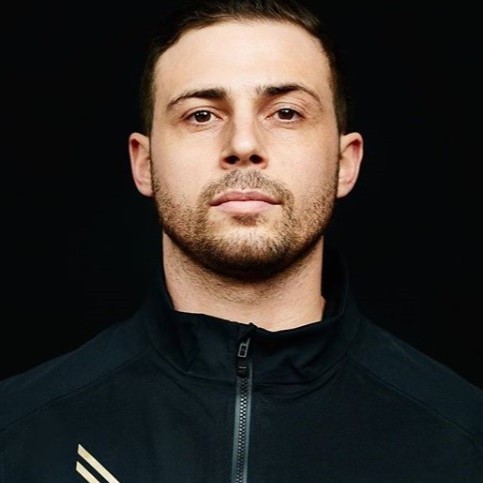How to use a massage gun on your legs after a marathon
Here's how to use your massage gun post-marathon

So you've bought one of the best massage guns on the market, but you're wondering how to use it after you've crossed the finish line of your first or fastest marathon.
Your legs are bound to feel beaten up after running 26.2 miles, but massage guns can be used as a recovery tool to help reduce DOMS (or delayed onset muscle soreness), and make getting down the stairs easier the next morning! According to the Cleveland Clinic, research has shown that massage guns deliver targeted percussive therapy directly to your muscles, helping to soothe DOMS, improving muscle recovery, and increasing range of motion and blood flow
But how soon after running should you use a massage gun, and how can you tell the difference between muscle soreness and injury? To find out more, we spoke to health and wellness education specialist Nikos Skevis.

Nikos is a health and wellness specialist with 15 years of industry experience. He graduated from Brunel University in 2007 with a Sports Sciences degree, specializing in physiology, psychology, and biomechanics. He has spent most of his career providing education and mentorship in the fitness industry and has also acted as a fitness coach and massage therapist for elite motorsports drivers. Nikos has also been the voice and face of several e-learning platforms including personal training, massage, and nutrition qualifications for awarding body Active IQ. Nikos is currently working as a master trainer and educational consultant for the global wellness technology company Hyperice, where he specializes in the creation and delivery of educational content for B2B partners as well as retail activation. Nikos is also a keen runner and has participated in multiple marathons.
How soon after a marathon should you use a massage gun?
"Generally the guidelines with recovery techniques are to administer within a few hours of the event in order to maximize the benefits, but using a massage gun after this window will still provide some relief to the user," Skevis explains.
How can you tell if muscles are sore or injured?
"Running a marathon can bring on some seriously delayed onset muscle soreness (DOMS), so expect muscles in the legs such as the quads, hamstrings, and calves to be pretty sore! DOMS tends to peak 24 to 72 hours after exercise, so any soreness that gradually gets worse during that time period is likely to be normal.
"Any pain to a muscle that was brought on suddenly during the race is likely to be an injury and would likely benefit more from a cold compression rather than percussive therapy, although this will be a good tool to utilize in the latter stages of rehab."
As a reminder, when it comes to when you shouldn't use a massage gun, you shouldn't go near your body with a massage gun if you have a broken bone, sprain or strain, or an inflammatory injury.
Get instant access to breaking news, the hottest reviews, great deals and helpful tips.
What frequency should you use the massage gun at?
"A marathon will cause cellular damage to muscle tissue, leading to soreness and inflammation. There will also be an accumulation of metabolic waste products that can exacerbate the situation. To help your body remove waste products and improve these symptoms, try using your percussion device at a lower frequency (speed) for 90 to 120 seconds with a little more pressure applied as you move the device towards your heart (e.g. from the knee towards the hip). This will aid the lymphatic system (the bodies sewage system), with the removal of these waste products as well as mobilize static venous blood (carrying carbon dioxide).
"The lymphatic fluid will move towards the lymphatic nodes where waste can be filtered out and the blood will move back to the lunges, via the heart, to be refilled with oxygen. This will provide good conditions in the muscle tissue to aid recovery.
"It’s likely you may need to use a lighter pressure if you have severe DOMS, so avoid reaching a discomfort level of 7/10 or above. Spend a little more time on the areas that are particularly sore and this should gradually relieve symptoms. It may be helpful to use a soft attachment on particularly sensitive areas, such as the cushion attachment if using a Hypervolt."
Can massage guns help you recover faster?
"Along with the removal of metabolic waste and reducing inflammation, there are several other benefits to percussive therapy that can aid recovery. Increased circulation ensures that oxygen and nutrients can be efficiently shuttled into muscle tissue, whilst carbon dioxide (metabolic waste) can be taken away. Studies have shown that percussive therapy can reduce soreness and pain sensitivity, as well as reducing the symptoms of DOMS and improving flexibility. Percussion massage can also stimulate the parasympathetic nervous system (the rest and digest branch of the nervous system), which stimulates relaxation and promotes tissue healing. To feel the relaxation effects of percussive therapy, it is advised to use the device for a longer period of time such as 20 minutes or more."
More from Tom's Guide
- I tried using a massage gun for a week at bedtime — here’s what happened
- Boston Marathon qualifying times — here’s how fast you need to run
- The best running shoes to buy, whatever you're training for

Jane McGuire is Tom's Guide's Fitness editor, which means she looks after everything fitness related - from running gear to yoga mats. An avid runner, Jane has tested and reviewed fitness products for the past five years, so knows what to look for when finding a good running watch or a pair of shorts with pockets big enough for your smartphone. When she's not pounding the pavements, you'll find Jane striding round the Surrey Hills, taking far too many photos of her puppy.
